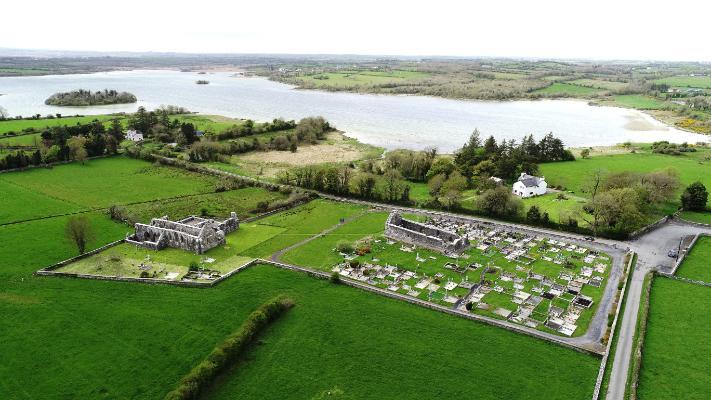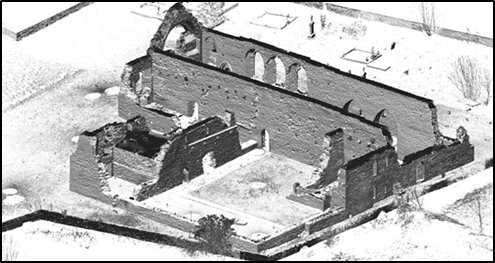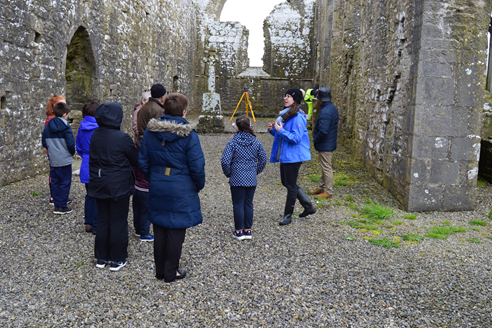- Remembering Professor Chris Williams
- Current Undergraduate Students
- Graduate Studies
- Future Students
- International Students
- Research
- CACSSS Research Areas
- Research Impact
- A Socio-Economic Study of Cork City Northwest Quarter Regeneration (CNWQR)
- Children’s Voices in Housing Estate Regeneration
- Cork Folklore Project
- Deep Maps: West Cork Costal Cultures
- Developing research to deliver high impacts in homelessness service provision by Cork Simon
- Moving On Ireland
- Project DaRT - Discussions and Reflections on Translation
- The Cork Folklore Project’s Memory Map
- The World-Tree Project
- The Augustinian Friars in Late Medieval Ireland
- (Re)Sounding Holy Wells
- Atlas of the Irish Revolution
- False Memories for Fake News in the Irish Abortion Referendum
- Atlas of the Great Irish Famine 1845-1852
- Hidden Galleries
- Movie Memories
- Between Two Unions: The constitutional future of the islands after Brexit
- Spotlight
- Speaking the Predicament: Empowering Reflection and Dialogue on Ecological Crisis
- Participatory arts for advocacy, activism and transformational justice with young people living in Direct Provision
- Make Film History Wins FIAT/IFTA Archive Achievement Award
- Dr. Marie Kelly (School of Film, Music & Theatre) co-edits : Scene 8 Volumes 1 and 2 (2021) – Special Issue: ‘Performance and Ireland’ (Intellect)
- The significance of humanities scholarship in challenging times
- Dr Sarah Foley, a Lecturer in the School of Applied Psychology, was awarded an NUI Grant for Early Career Academics in 2020
- NUI Awards Grant for #DouglassWeek: 8th-14th February, 2021
- Humanities for the Anthropocene
- Forgotten Lord Mayor: Donal Óg O’Callaghan, 1920-1924
- Architectural Space and the Imagination: Houses in Literature and Art from Classical to Contemporary
- Dr Siobhan O’Sullivan - Agency and ageing in place in rural Ireland
- Launch of new research cluster on 'Life Writing'
- What keeps us going?
- Through the lens of the secret police: Images from the religious underground in Eastern Europe
- Dr. Amanullah De Sondy - The Pocket Facts Guide for Jewish, Christian and Muslim People 2020
- Issue 19 of Alphaville published by The Department of Film and Screen Media
- Digital Edgeworth Network
- Make Film History: Opening up the Archives to Young Filmmakers
- Establishment of monthly online reading group on Abolition and Decarceration
- Dr Anne Marie Devlin (Applied Linguistics) published a special issue on Study abroad and the Erasmus+ programme in Europe
- Dr. Barbara Siller (Department of German), has co-published an edition on literary multilingualism.
- Postgraduate Researchers from MA in Medieval History produce Mapping Cork online exhibition
- Adaptation Considered as a Collaborative Art: Process and Practice, (Eds.: Bernadette Cronin, Rachel MagShamhráin and Nikolai Preuschoff
- (Non)Spectacular Infrastructure: Enacting Resource Circulation in Stages, Studios and Communities
- Dr. Clíona O’Carroll (Department of Folklore) has received an IRC New Foundations grant
- Dr Catherine Forde from the School of Applied Social Studies has been awarded an IRC New Foundations grant
- Elderly (non)migrants’ narratives of home: A comparative study of place-making in Ireland and Slovakia (EMNaH)
- Dr. Ken Ó Donnchú, lecturer in the Department of Modern Irish, has received an IRC New Foundations Award
- Decolonizing Irish Public Heritage
- EMBRACE - Exploring Mobility: Borders Refugees and Challenging Exclusion
- Dr. Marica Cassarino (School of Applied Psychology) awarded Royal Irish Academy and British Academy Knowledge Frontiers Network Funding
- CACSSS Postdoc wins Charlemont Grant
- Childhood, Religion and School Injustice by Karl Kitching
- New Collaboration between UCC, RTÉ and the Department of Culture, Heritage and the Gaeltacht
- Cork Movie Memories - Dan O’Connell and Gwenda Young (Department of Film and Screen Media
- Chronicles of COVID-19/Cuntais COVID-19’ initiative: testimony collection by Cork Folklore Project
- Dr. Rachel MagShamhrain (Head of Department of German) has published a co-edited collection on Adaptation
- Professor Caitríona Ní Dhúill (Department of German) has published a new monograph
- Two School Postdoctoral Fellows Awarded Royal Irish Academy and British Academy Funding
- Funding Success for Dr Joanna Hofer-Robinson
- New Collaboration between UCC, RTÉ and the Department of Culture, Heritage and the Gaeltacht
- CACSSS Postdoc wins Charlemont Grant
- Applied Social Studies team win ESWRA Outstanding Publication Award 2020
- CACSSS postdoc is awarded Maurice J. Bric Medal of Excellence at IRC’s Researcher of the Year Awards 2019.
- Past postdoctoral researchers in the College
- Dr Mastoureh Fathi
- Dr Michalis Poupazis
- Dr Richard Mason
- Dr Martin Wall
- Dr Rebekah Brennan
- Dr Tatiana Vagramenko
- Dr Anca Maria Șincan
- Dr Agnes Hesz
- Dr Gabriela Nicolescu
- Dr Kinga Povedák
- Dr Declan Taggart
- Dr Anne-Julie Lafaye
- Dr Ken Keating
- Dr Laura Maye
- Dr Martina Piperno
- Dr Brandon Yen
- Dr Annie Cummins
- Dr Rebecca Boyd
- Dr Sean Hewitt
- University Staff Recognition Awards
- CACSSS Welcome new MSCA Funded Fellows
- College of Arts, Celtic Studies and Social Sciences opens a research facility on Wandesford Quay
- IMMERSE
- CACSSS Wins Big at UCC 2018 University Staff Recognition Awards
- Upcoming Events
- Event Archive
- CACSSS Research Highlights 2012 - 2020
- Research News Archive
- IRC awards funding to 3 projects in the Dept of Archaeology: DAEICS - Digital Atlas of Early Irish Carved Stones (PI Dr Tomas O’Carragain)
- IRC awards funding to 3 projects in the Dept of Archaeology: NEW PASTURES (PI Dr Katharina Becker)
- CIPHER project shortlisted for Times Higher Ed (THE) Award
- CACSSS Researcher funded through HEA North South Research Programme with UU to explore Critical Epistemologies Across Borders (CEAB)
- Leabhar Nua ar an bhFiannaíocht/New Publication on the Finn Cycle
- Cork and Belfast north south prison-university classroom partnerships secure funding from government’s shared island initiative
- Women of the Borderlands: A Walking Biographical Study of Women’s Everyday Life on the UK/Irish Border funded through the HEA North-South Partnership
- Ultonia - Cultural Dynamics in medieval Ulster and beyond: a shared inheritance
- IRC awards funding to 3 projects in the Dept of Archaeology: IPeAT - Irish Peatland Archaeology Across Time (PI Dr Ben Gearey)
- Dr Edward Molloy, School of English and DH - wins Maurice J. Bric Medal of Excellence in IRC’s Researcher of the Year Awards 2020.
- Professor Claire Connolly (School of English and Digital Humanities) appointed to the Irish Research Council
- Dr Máirín MacCarron FRHistS wins the NUI Irish Historical Research Prize 2021
- ERC Hidden Galleries project publishes The Secret Police and the Religious Underground in Communist and Post-Communist Eastern Europe
- CACSSS researchers to host EPA funded online workshop
- €1.5 million ERC Starter Grant Award for Researcher in Dept of Music, School of Film Music and Theatre
- Three PhD students in Applied Psychology commence projects funded through SFI research centre Lero
- CACSSS Researcher co-authors paper for Science on the ‘ecological’ survival of rare manuscripts and texts
- 2021 Research Awardees recognised
- New Foundations Call 2022 open
- C21 Editions
- University College Cork and the Arts Council have appointed Alan Gilsenan as the 2019/20 Film Artist in Residence.
- School of Applied Psychology hold an open house showcase for People and Technology Research Group
- CACSSS Researcher secures major IRC Laureate award for project GENCHRON to explore gender, chronology and time in the Medieval world
- CACSSS Researcher secures major IRC Laureate award for project Cyber Social
- New York Times reports on CACSSS Researcher Dr Alexander Khalil’s (School of Film, Music & Theatre) collaborative music and neuroscience work
- project MUSLIMWOMENFILM project selected for publication in the ‘Results in Brief’ section of the European Commission’s CORDIS website
- GendeResearchIreland Symposium: Reflections on Institutionalising Gender Equality in Higher Education
- Community Engagement
- Careers & Employability
- Information for Guidance Counsellors
- Information for Staff
- Schools in the College
- People
The Augustinian Friars in Late Medieval Ireland

An aerial photograph of Burriscarra friary and parish church captured by drone during fieldwork in Co. Mayo, May 2018
The Augustinian Friars in Late Medieval Ireland
Exploring the impact of one of the most spiritually revolutionary religious movements of medieval Europe
The Challenge
At a time when the destruction of cultural heritage is used as an ideological weapon, surveying and understanding medieval monuments and those who built them are necessary to ensure the survival of these monuments for future generations and as a way to promote and protect cultural heritage and its significance to our society. This project endeavours to do that through a multidisciplinary study of the physical remains of medieval Augustinian friaries in Ireland. In the Middle Ages, the mendicant orders, and among them the Augustinian friars, revolutionized the way people experienced their faith and practiced religion. Their friaries helped in shaping the physical landscapes of towns and countryside, and their enduring connection to local communities played a crucial role in the history of medieval religion and of post-Reformation Europe. Yet in Ireland, the remains of Augustinian friaries are rarely known outside their locality. What impact did these friaries have on their environment, physically, economically and socially? What was the extent of the friars’ impact on late medieval Irish society? And how does the Irish evidence compare to the friars’ legacy elsewhere in Europe? In answering these questions, the project aims to highlight a significant link that Augustinian friaries represent between present-day local communities and their past. The project also shows the meaningful place of the friaries in the history of Irish society, culture and religion and in the historical and architectural heritage Ireland shares with other European countries.
The Research
The project is funded by the Irish Research Council as a Government of Ireland Postdoctoral Fellowship. It involves three key objectives: the review of existing scholarship and methodologies; the survey of all sites where remains of the friaries exist (with an architectural, archaeological and spatial analysis of the buildings and their surroundings, and the laser scanning and drone survey of Burriscarra friary, Co. Mayo in May 2018, in collaboration with the Discovery Programme, Ireland’s Centre for Archaeology and Innovation and with the support of Mayo heritage officer); and the dissemination of research, through participation in conferences, talks and seminars, the publication of two articles in peer-reviewed journals, and the organisation of a one-day international and multidisciplinary symposium, exploring the theme of marginality and the mendicant orders. Finally, community outreach has been a crucial element of the project from the beginning, with the involvement of the Burriscarra local community during the fieldwork and the National Heritage Week 2018, when results of the survey were presented.
The Impact
New knowledge produced and exchanged: The study and interpretation of the data collected during fieldwork, including photographs, ground plans, drone imagery and laser-scan data, have led to a significant increase of our knowledge and understanding of the physical remains of Augustinian friaries. The analysis of the data collected at Burriscarra friary also identified further questions and areas of research, such as the need for a full geophysical survey to be conducted at the site. Specific outputs have been chosen to share this new knowledge with both academic and lay audiences:
- Presentation of the project at the Irish Conference of Medievalists, UCC, June 2018;
- Talks about Burriscarra and the Augustinian friaries in Co. Mayo given at UCD School of Archaeology & Archaeological Society Research Seminar Series and Mayo Historical and Archaeological Society’s public lecture;
- Talk and tour given as part of the Monastic Waterford event organised by the Discovery Programme in collaboration with the Waterford Medieval Museum;
- Tour of monastic Cork as part of European Research Night, given with the project mentor Dr Małgorzata Krasnodębska-D’Aughton;
- Creation of a Wordpress blog (irishmedievalfriaries.wordpress.com) to share the progress of the project in real time with a general audience (214 visitors from 23 countries and 839 views accumulated since April 2018);
- Sharing research activities and outputs on Twitter: 145 followers gained since the project began in October 2017, 4161 visits and 118 mentions;
- An interview with the project fellow Dr Anne-Julie Lafaye about the research was featured on Episode 12 of the podcast ‘Cool Science and Curious Minds’, played 275 times on Soundcloud;
- Organisation of two National Heritage Week events around the work in Burriscarra: a public talk in Carnacon community centre and a tour of the site, attended by about 50 people in total; creation of a mailing list signed by 23 attendees to inform them of further fieldwork and outreach activities;
- 3D model of Burriscarra friary based on the laser-scanning data was generated and is available on the open access platform Sketchfab (351 views, https://sketchfab.com/models/73d43ce99340477ca7a79f8798834c6b).

An isometric view of the laser-scan data of Burriscarra friary. Image courtesy of the Discovery Programme
International knowledge exchange and connections: One of the key outcomes of the project has been an increased awareness about the wealth of Ireland’s mendicant architectural heritage outside Ireland. The project has also led to new collaborations and connections with international expertise which will further benefit UCC by leading to an exchange of personnel and ideas. The following outputs have increased and will continue to increase UCC’s international profile in the area of wider medieval studies:
- Paper delivered at the International conference ‘Monasteries and Reformation’ at Wroclaw University in November 2017;
- Publication of a paper on the Augustinian friaries of Counties Mayo and Sligo, as part of the proceedings of the ‘Ruralia XII’ conference, in Ruralia, peer-reviewed journal of the international archaeological association (in press - http://www.ruralia.cz/).
“By looking at a small group of a major socio-religious mendicant movement, the project addresses the issues of marginality, the place of peripheral groups within a larger socio-political landscape, the relationship between space and society, and the relationship between spiritual providers and social fabric. All these concerns resonate nowadays and are current in international scholarship.”
Dr Małgorzata Krasnodębska-D’Aughton, Project Mentor
- Organisation of an international symposium ‘Mendicants on the Margins’ in June 2018: 9 speakers from 4 countries (Ireland, US, France and Greece) examined understudied aspects of the history, architecture and material culture of the mendicant orders, highlighting the connection and relevance of the project to exciting current research across Europe;
- Publication of a report of the symposium in a French peer-reviewed journal, Etudes Franciscaines (11-2, 2018);
- New collaboration with invited speaker Dr Haude Morvan as part of her project on the Observance; Drs Lafaye and D’Aughton will attend Dr Morvan’s next project conference in Rome in November 2019;
- Two sessions accepted for Leeds International Medieval Congress, 2019, organised in collaboration with Prof. Janet Burton from the Monastic Wales project.

A tour of Buriscarra friary was organized while the laser-scanning survey was taking place in May 2018.
Cultural and educational impact, and capacity building: The project has led to the increased public knowledge and appreciation of the cultural value of the architectural heritage represented by Augustinian friaries, and to the fostering of heritage ownership among local communities. Outputs such as the research blog have increased the level of engagement of the public with academic research. As shown by Fáilte Ireland’s recent launch of Ireland’s Ancient East and Hidden Heartlands schemes, tourism stakeholders recognise the role of historical and architectural heritage. In this respect, the project’s public outputs have helped in promoting cultural tourism at lesser-known monastic sites across the country, which in the medium to long term could have a positive economic impact on local communities, increasing revenue linked to tourism in regions where friaries are located:
- Dr Lafaye was invited to speak about Augustinian friars and friaries at the conference organised in November 2018 by the Medieval Bray community archaeology project, after a member heard the ‘Cool Science’ podcast episode featuring Dr Lafaye;
- Visit to Carnacon National School and a tour of Burriscarra friary introduced the pupils and members of the local community to modern surveying techniques and highlighted the local and national importance of the site;
- The Heritage Week events were promoted in 2 local newspapers and on Midwest Radio;
- The talk in Burriscarra was mentioned and a photograph of Dr Lafaye and local attendees was printed in The Western People newspaper (3 September 2018);
- The talk was also shortlisted for a National Heritage Award in the Hidden Heritage category, acknowledging events that have ‘successfully explored lesser known aspects of Ireland’s heritage’;
- According to feedback from an attendee, the Heritage Week tour of Burriscarra friary directly led to its first ever inclusion in a guided visit of local sites organised for American tourists;
- The laser scanning survey and 3D model generated insure that a full digital record of the friary now exist, no matter what happens to the physical remains in the future.
Relevance of the project to UCC strategic goals: The project is aligned with UCC’s strategic goals by delivering an innovative research that is both community-based and international in its scope as well as by sharing the project’s findings through teaching. Dr Lafaye has contributed to undergraduate and postgraduates research-led teaching and presented the students with the multidisciplinary approach successfully adopted by the research:
- Seminar titled ‘Digitizing History – The Monastic Ireland Project’ delivered as part of MA in History module at the UCC School of History, in October 2017;
- Two-hour seminar titled ‘Spaces and Religious Practices: The Augustinian Friars’ presented to the UCC School of History’s third- year students, registered on a specialized seminar ‘Society, Art and Religion in Late Medieval Ireland’.
For More Information
For more information about the project see https://irishmedievalfriaries.wordpress.com/, or contact Dr Anne-Julie Lafaye at annejulie.lafaye@ucc.ie or https://twitter.com/AnneJuClemence
